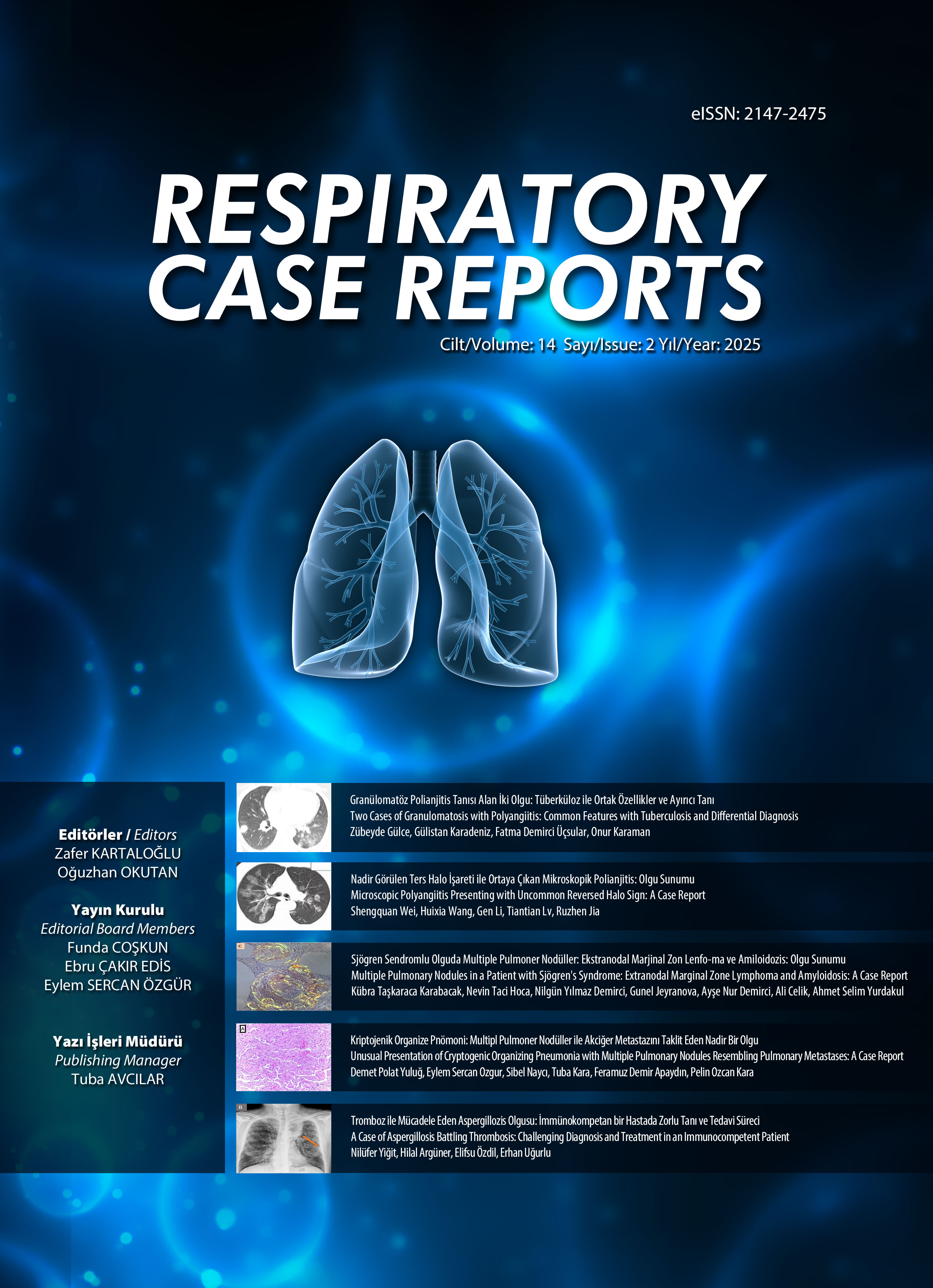
Plevral Mezotelyomalı Bir Hastada Bilateral Non-arteritik İskemik Optik Nöropati ve Minimal Değişiklik Hastalığı
Senyo TagbotoYarmouth Bölge Hastanesi, Yarmouth, KanadaMalign mezotelyoma tipik olarak yavaş ilerleyen dispne ve göğüs ağrısı ile kendini göstermektedir. Toraks dışı semptomlar ve paraneoplastik tablolar çok nadirdir. Bu maliginite ile glomerüler hastalık birlikteliği literatürde nadiren bildirilmiştir. Bu olgu sunumunda, 26 yıl önce mesleksel asbest maruziyeti olan son bir aydır yavaş ilerleyen görme kaybı, hafif kilo kaybı ve ayaklarda ödem yakınmaları olan 65 yaşında erkek hasta sunulmuştur. Göz hastalıkları uzmanları tarafından non-arteritik iskemik optik nöropati geliştiği belirlendi. İleri nefrolojik incelemelerde renal biyopsi ile doğrulanan minimal değişiklik hastalığına bağlı nefrotik sendrom olduğu gösterildi. Steroid tedavisi ile klinik semptomlar hızla düzeldi. Nefrotik sendrom ve ilerleyici görme kaybı klinik olarak remisyona girdi ve kilo kaybı düzeldi. Başlangıç akciğer grafisi yalnızca kronik değişiklikler gösteriyordu. Sekiz ay sonra nefes darlığı ve göğüs ağrısı semptomları ortaya çıktı ve sağ da yoğun plevral sıvı saptandı. İleri incelemelerde plevral mezotelyoma tespit edildi.
Anahtar Kelimeler: malign mezotelyoma, minimal değişiklik hastalığı, nefrotik sendrom, non-arteritik iskemik optik nöropatiMinimal change disease and bilateral non-arteritic ischemic optic neuropathy in a patient with pleural mesothelioma
Senyo TagbotoYarmouth Regional Hospital, Yarmouth, Canada; University of Health and Allied Sciences, Ho, GhanaMalignant mesothelioma typically presents with slowly progressive dyspnea and chest pain. Extra-thoracic symptoms and paraneoplastic presentations are very rare. The association of this malignancy with glomerular disorders has been only rarely reported in the literature. The present report describes the case of a 65-year-old man with a remote occupational exposure to asbestos more than 26 years prior who presented with a months history of slowly progressive visual loss, minimal weight loss, and pedal edema. Assessments by several ophthalmologists concluded that he had developed non-arteritic ischemic optic neuropathy. Further nephrological work-up demonstrated that he had developed nephrotic syndrome due to minimal change disease, which was confirmed with a renal biopsy. His clinical symptoms rapidly improved with steroid treatment. The nephrotic syndrome went into clinical remission, his progressive visual loss improved, and there was no further weight loss. The initial chest X-ray performed when he first presented was reported as showing only chronic changes. He reported the symptoms of shortness of breath and chest pain 8 months later and was found to have a large right pleural effusion. Further investigation revealed pleural mesothelioma.
Keywords: Malignant mesothelioma, minimal change disease, nephrotic syndrome, non-arteritic ischaemic optic neuropathyMakale Dili: İngilizce











